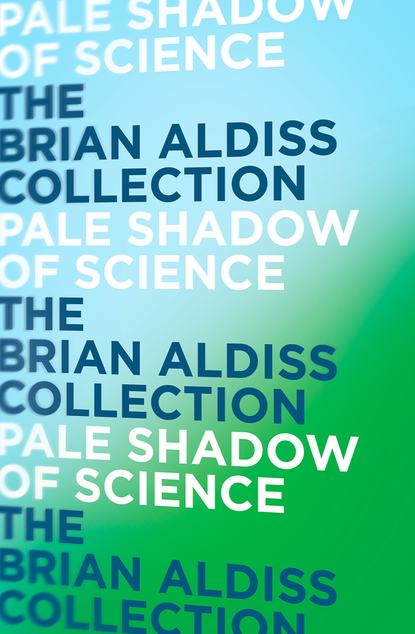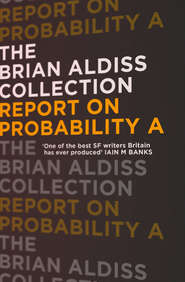По всем вопросам обращайтесь на: info@litportal.ru
(©) 2003-2024.
✖
Pale Shadow of Science
Настройки чтения
Размер шрифта
Высота строк
Поля
TheLastMan was published in 1826, anonymously, as Frankenstein had been. Few critics of standing have praised the novel. It meanders. Muriel Spark, however, said of it that it is Mary’s ‘most interesting, if not her most consummate, work.’
The theme of TheLastMan was not new, and could hardly be at a time when epidemics were still commonplace. The title was used for an anonymous novel in 1806. Thomas Campbell wrote a poem with the same title; whilst at the Villa Diodati, Byron composed a poem entitled ‘Darkness’ in which the world is destroyed and two men, the last, die of fright at the sight of each other. In the same year that Mary’s novel was published, John Martin painted a water-colour on the subject (later, in 1849, he exhibited a powerful oil with the same title).
The novel is set in the twenty-first century, a period, it seems, of much sentimental rhetoric. Adrian, Earl of Windsor, befriends the wild Lionel Verney. Adrian is the son of the King of England, who abdicated; one of the King’s favourites was Verney’s father. Adrian is full of fine sentiments, and wins over Verney. Verney has a sister called Perdita who falls in love with Lord Raymond, and eventually commits suicide. Raymond is a peer of genius and beauty who besieges Constantinople. The relationships of these personages, together with a profusion of mothers and sisters, fill the first of the three volumes. Adrian is Mary’s portrait of Shelley, the bright rather than the dark side, Perdita is Claire, Raymond Byron. Verney plays the part of Mary, and eventually becomes the Last Man. Verney, like Frankenstein, is a paradigm of the Outsider.
There is undoubted strength in the second and third books, once the plague has the world in its grip. Society disintegrates on a scale merely hinted at in the unjust world of Frankenstein. ‘I spread the whole earth out as a map before me. On no one spot of its surface could I put my finger and say, here is safety. In the south, the disease, virulent and immedicable, had nearly annihilated the race of man; storm and inundation, poisonous winds and blights, filled up the measure of suffering. In the north it was worse ….’
Finally, Verney-Mary alone is left, drifting south towards the equator, like a character in a J.G. Ballard novel. So Mary tells us how life was without Shelley; her universe had gone. Through science fiction, she expressed her powerfully inexpressible feelings.
In his brief book on Mary,
William Walling makes a point which incidentally relates TheLastMan still more closely to the science-fictional temper. Remarking that solitude is a common topic of the period and by no means Mary’s monopoly, Walling claims that by interweaving the themes of isolation and the end of civilization, she creates a prophetic account of modern industrial society, in which the creative personality becomes more and more alienated.
TalesandStories by Mary Shelley were collected together by Richard Garnett and published in 1891. They are in the main conventional. Familial and amorous misunderstandings fill the foreground, armies gallop about in the background. The characters are high-born, their speeches high-flown. Tears are scalding, years long, sentiments either villainous or irreproachable, deaths copious and conclusions not unusually full of well-mannered melancholy. The tales are of their time. Here again, the game of detecting autobiographical traces can be played. One story, ‘Transformation,’ sheds light on Frankenstein – but not much. We have to value Mary Shelley, as we do other authors, for her strongest work, not her weakest; and her best has a strength still not widely enough appreciated.
This collection of stories from scattered journals and keepsake albums indicates Mary’s emotional and physical exhaustion. In the course of eight years, between 1814 and 1822, she had borne four children, three of whom died during the period, and had suffered miscarriages. She had travelled hither and thither with her irresponsible husband, who had most probably had an affair with her closest friend, Claire. And she had witnessed suicides and death all round her, culminating in Shelley’s death. It was much for a sensitive and intellectual woman to endure. No wonder that Claire Clairmont wrote to her, some years after the fury and shouting died, and said, ‘I think in certain things you are the most daring woman I ever knew.’
1. An enjoyable recent biography is Jane Dunn’s Moon in Eclipse: A Life of Mary Shelley, 1979.
2. One thinks here of the scene after Shelley’s death, when Trelawny caused his corpse to be burnt on the shore, Byron and Leigh Hunt also being present. At the last possible moment, Trelawny ran forward and snatched Shelley’s heart from the body.
3. David Ketterer, Frankenstein’s Creation: The Book, The Monster, and Human Reality, University of Victoria, 1979.
4. Leonard Wolf, The Annotated Frankenstein, 1977.
5. David Ketterer, ‘Frankenstein in Wolf’s Clothing,’ Science Fiction Studies, No. 18, July 1979.
6. Christopher Small, Ariel Like a Harpy, 1972.
7. Brian Aldiss, Billion Year Spree, 1973.
8. Ellen Moers, ‘Female Gothic: The Monster’s Mother,’ The New York Review, 21 March 1974, reprinted in Literary Women, 1976.
9. Muriel Spark, Child of Light: A Reassessment of Mary Wollstonecraft Shelley, 1951. *A biographer of Mary Shelley, writing in the nineteen-thirties, advances the argument that Frankenstein is ‘the first of the Scientific Romances that have culminated in our day in the work of Mr. H. G. Wells,’ because it erects ‘a superstructure of fantasy on a foundation of circumstantial “scientific fact.”’ Shrewd judgement, although the excellence of the novel is otherwise underestimated. (R. Glynn Grylls: Mary Shelley, A Biography, 1938.)
10. 9 William Walling: Mary Shelley, 1972.
11. Claire Clairmont, letter, quoted in Julian Marshall’s Life and Letters of Mary Wollstonecraft Shelley, 1889.
The Immanent Will Returns (#ulink_f7aba801-f43a-5be9-a85f-3be6fe22bc77)
‘WHAT OF THE IMMANENT WILL AND ITS DESIGNS?’ ASKS Thomas Hardy at the beginning of TheDynasts, and proceeds to demonstrate at length how little the Will cares for its creations. He leaves us with a faint hope that the Will can in some way evolve, and that ‘the rages of the Ages shall be cancelled,/Consciousness the Will informing,/Till it fashion all things fair.’ Thinking the matter over after the First World War, Hardy conceded that this was a little too optimistic: thereby leaving the door open for Olaf Stapledon.
Stapledon sweeps away the human characters in whom Hardy delighted, to give us a threadbare stage upon which humanity is lost in the incomprehensible toils of creation or the soliloquies of the Star Maker. The Star Maker is the Immanent Will wearing another hat.
W. Olaf Stapledon (1886–1950) is a very English kind of writer. He won no great reputation in his lifetime and has accumulated little since; yet he cannot be said to be entirely forgotten, despite his mysterious absence from most of the histories of English Literature.
His work in philosophy – a subject which at one time he taught in the University of Liverpool – has proved impermanent, although AModernTheoryofEthics went through several reprints.
His kind of visionary writing, which attempts to establish an individual mythology, is not unfamiliar. His novel OddJohn has a subtitle which recalls Blake (‘A Story Between Jest and Earnest’ – though there’s precious little enjoying of the lady in it); his grandiosities recall Doughty’s six-volume epic poem, DawninBritain, with its quixotic resolve to restore Chaucer to modern English. Two other conflicting voices echo strongly through Stapledon’s fiction: the Milton of ParadiseLost and that great Victorian storm-trooper, Winwood Reade, whose MartyrdomofMan attempted to justify the ways of man to a dead god.
We may call H.G. Wells’s early scientific romances science fiction with a clear conscience. It is more debatable whether Stapledon’s first novel, LastandFirstMen (1930), and StarMaker (1937) so qualify. They are Stapledon’s attempt to blend fiction and philosophy. Wells’s imagination was untainted by metaphysics, though politics finally eclipsed it; but Stapledon read Modern History while up at Balliol from 1905–09, and most of his fictions strive to iron themselves out into the progressions of historicity, complete with time-charts.
These two vast works, best regarded as a unity, are suigeneris. The preface to LastandFirstMen warns that this ‘is not a prophecy; it is a myth, or an essay in myth.’ Even sterner is the disclaimer at the portals of StarMaker: ‘Judged by the standards of the Novel, it is remarkably bad. In fact, it is no novel at all.’
The Novel has proved itself unexpectedly capacious, but the Immanent Will does seem to demand a less convivial stage on which to enact the rages of the ages. The rages which energise the gaunt structures of LastandFirstMen and StarMaker are, basically, religious faith versus atheism and the quest for individual fulfillment versus the needs of the community, whether terrestrial or stellar. Modern rages, one might call them.
With their emphasis on spiritual suffering, catastrophe to come, and the surrealist mutations of shape which mankind must undergo in submission to the Creator, those great glacial novels, together spanning the thirties, now appear oddly characteristic of their day.
In many respects, Stapledon himself is markedly of his time. As were many men of his generation, he was torn by religious doubt; he was a non-combatant in the 1914–1918 war, and had some trouble in fitting himself, essentially a Victorian, into post-war society. Along with other intellectuals of his day, he flirted with pacifism and promiscuity. He had strong leanings towards Communism without ever becoming a member of the Party. Like many writers outside the swim of London literary society, he knew few other authors, and was critically disregarded.
It could also be said that the central premise of his work, that mankind is irrelevant to the purposes of the universe, is unpalatable to believer and unbeliever alike. It is precisely for that unpalatability, so variously, so swoopingly, expressed, as if in contradiction to itself, that his admirers honour him.
LastandFirstMen belongs to that class of book which needs to arrive in a reader’s life at the right moment if it is to arrive at all. Then one never forgets it.
I remember my first encounter with it. I was awaiting a typhus inoculation in Assam in 1943, before the British Second Division advanced on Japanese-held Mandalay. The medical officer was housed in a commandeered bungalow outside Kohima which possessed a considerable library. On the shelves stood a book I had never heard of, in two volumes, the first two volumes Allen Lane published in his blue series of Pelican Books (for he had taken Stapledon at his word and issued the work as non-fiction). I was captivated before I was inoculated.
For the last and first time in my life, I deliberately stole a book. I could not bear to be parted from it.
While great things went forward in the world – destruction and victory – Stapledon’s voice proved to be what was needed, in marked contrast to the pedestrian chat of soldiers. His daring time-scales in particular corresponded to something felt in the bloodstream.
What filled me then was Stapledon’s all-embracing vision of humanity locked within the imperatives of creation, untainted by a Christianity which seemed to have failed. StarMaker, written only seven years later, amplifies this vision, elevates it, and marks a great advance in the writer’s art. The two billion year long history of the future which is LastandFirstMen is encompassed in one paragraph of the second book. Again, human kind – this time one individual soul – is confronted with the necessity of comprehending the cosmic process of which it is part: a noble and ever-contemporary quest.
Noble or not, Stapledon has been neglected. He had a dislike of Bloomsbury and satirised the coterie in LastMeninLondon – which presumably did for him. If his name is to be preserved, it will be by science fiction readers. Science fiction studies are now so alarmingly advanced in the United States that the first two studies of Stapledon’s oeuvre are American. First was Patrick McCarthy’s OlafStapledon (Twayne, 1982). Now here comes the energetic, unorthodox Professor Leslie A. Fiedler, with OlafStapledon, AManDivided (O.U.P., 1983). His volume appears in a series flatly entitled ‘Science Fiction Writers,’ edited by Robert Scholes, in which studies of Wells, Heinlein and Asimov have already appeared.
Fiedler has problems. One initial difficulty is that LastandFirstMen evidently did not arrive in his life at the right moment. He was ‘infuriated’ that it had no story or characters. He finds it improbable that he should be writing on ‘so anomalous an author.’ Not an encouraging start, not an encouraging attitude.
One’s initial misgivings are never allayed. Fiedler briefly covers Stapledon’s life (though not the Oxford years, when Stapledon rowed for his college), deems it an uneventful one, like the lives of most writers, and hurries on to investigate the glories and shortcomings of the fiction. The book reaches roughly the same conclusions as would any reasonable man: that OddJohn is a worthwhile contribution in the Poor Little Superman line, that Sirius is late gold, and that StarMaker is the great triumph, with its ‘all but intolerable appeal.’ While finding the other writings disappointing, it relates them illuminatingly to one another.
On the whole, more engagement would have been welcome, and a recognition that Stapledon is the first to write about an Immanent Will, or whatever you call It, which stands completely outside the universe He or It has created – a remarkable alienation effect derived from the scientific despairs of the time.
Despite its remote title, Sirius is the most approachable of all Stapledon’s inventions. Although Fiedler surprisingly finds its theme pornographic, he gives a perceptive account of its Beauty and the Beast theme, in which the super-dog, Sirius, and the human girl, Plaxy, consummate their love. Stapledon essays this unpalatable theme, interspecific sexual relations, with genuine warmth and pathos.
The scientist who develops Sirius’s intelligence exclaims, ‘I feel as God ought to have felt towards Adam when Adam went wrong – morally responsible.’ But this, as Fiedler rightly insists, is a love story, and a doomed one at that. The ordinary clamour of human affairs, the rattle of coffee spoons, the marrying and begetting, lie beyond Stapledon’s compass: yet this harried canine life, with its struggle for self-realisation on lonely hillsides, does grow to represent, as Fiedler declares, ‘the condition of all creatures, including ourselves.’
It is Stapledon’s most famous book, LastandFirstMen, which most troubles Fiedler. The problem with that splendid flight of the imagination is that four opening chapters intervene before take-off. These are the chapters purporting to cover terrestrial history from 1930, when the book was published, until the fall of the First Men (us), five thousand years after the death of Newton. Not only do these chapters get everything wrong (Germans good, Americans bad, Russians nice, Chinese still sporting pigtails in 2298 A.D.); they show racial prejudice, with short shrift given Negroes, Jews, and capitalist Americans.
Only after Stapledon has struggled through this weary catalogue of fake history do we get to the great scientific myth. Should we trust the myth when the fact is so faulty? Charity suggests that Stapledon was, by all the evidence, a pleasant, self-effacing man who preferred to live quietly with his wife, son and daughter in the Wirral. His contacts with the outside world were few; he was glad to dream and cultivate his garden. He got the facts wrong but the dream right. Many contemporary science fiction writers achieve the opposite.
So Fiedler spends some while talking about the long out-of-print American edition of LastandFirstMen, abridged by Basil Davenport, ignoring what we may term the Allen Lane solution. Such is the price we pay for the defects of English scholarship.
British readers will also sense Fiedler’s difficulties in coming to terms with Stapledon’s Englishness and his English self-deprecation. That Stapledon was a late developer is clear; his early transplantation to Egypt may help account for that. But there was nothing particularly unusual about a Victorian man remaining virgin into his thirties, owing to lack of opportunity and the sexual mores of the time; repression is a theme occurring more than once in Stapledon’s works – however odd this may appear to the generation which invented AIDS. Fiedler stresses the homosexual relationships he detects in Stapledon’s books, worries about no loves free of ‘shameful miscegenation,’ and shakes his head in a fuddy-duddy way over Stapledon’s ‘not-quite-incestuous’ marriage to his Australian first cousin, Agnes. He also claims to find in the works a streak of sado-masochism ‘verging on the pathological.’ Myself, I think it was just a passing Zeitgeist.
Perhaps this pop psychology serves to add a little melodrama to an otherwise humdrum existence, but it distorts the truth. What a reader of Stapledon would really like to know is whence came his intense imaginative gift, which can at once create such effects of distancing in space and time and yet brings us close to multitudinous beings unlike ourselves in almost every way. Could it have been something to do with those restless early years, exiled back and forth between Merseyside and Port Said? The sea voyages would have been odysseys of estrangement for a sensitive child.
The exclusion of events from his life suggests that, like Bertrand Russell, Stapledon felt cursed by loneliness. His novels are short on dialogue and read often like debates with himself. In one remarkable section of Chapter X of StarMaker, the journeying human soul, with spirit friends, views the galaxy at an early stage of its existence. The passage is far too long to quote here; it concludes with a view of the fully evolved galaxy:
The stars themselves gave an irresistable impression of vitality. Strange that the movements of these merely physical things, these mere fire-balls, whirling and travelling according to the geometrical laws of their minutest particles, should seem so vital, so questing. But then the whole galaxy was itself so vital, so like an organism, with its delicate tracery of star-streams, like the streams within a living cell; and its extended wreaths, almost like feelers; and its nucleus of light. Surely this great and lovely creature must be alive, must have intelligent experience of itself and of things other than it.











